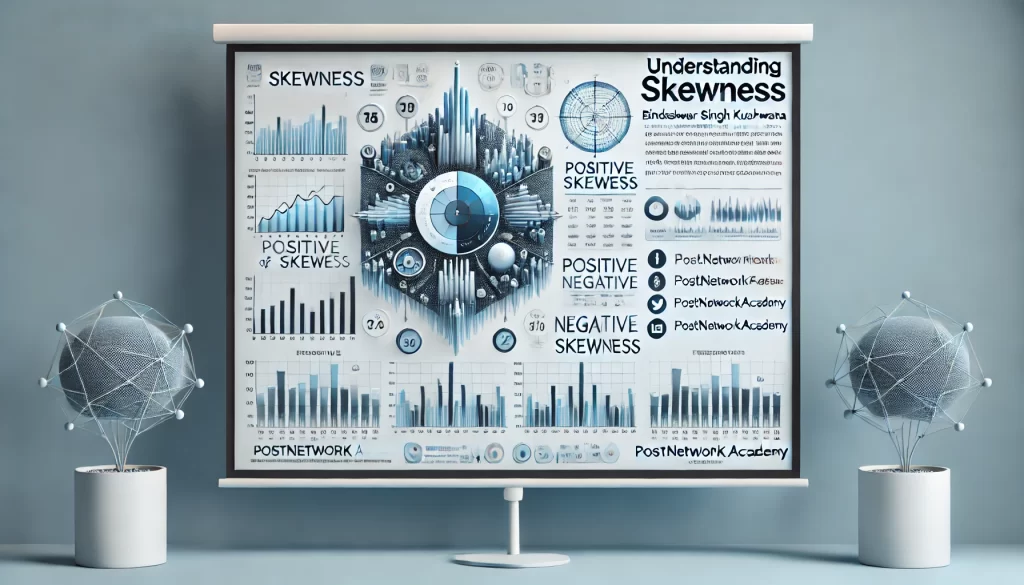Understanding Skewness: An Essential Concept in Data Science
Welcome to the Data Science and AI Lecture Series by PostNetwork Academy!
In this blog post, we’ll dive deep into the concept of skewness, a critical aspect of understanding data distribution in statistics. Whether you’re a beginner or an advanced learner, this post will help clarify the types of skewness and their real-world implications.
—
What is Skewness?
Skewness refers to the asymmetry or lack of symmetry in a dataset’s frequency distribution. Even if two datasets have the same mean and standard deviation, their shape can differ significantly, impacting how we interpret and analyze the data.
Here’s what skewness tells us:
– The direction of data spread.
– How balanced or imbalanced the data distribution is.
—
Key Definitions of Skewness
1. Morris Hamberg: “Skewness refers to the asymmetry or lack of symmetry in the shape of a frequency distribution.”
2. Garret: “A distribution is said to be ‘skewed’ when the mean and the median fall at different points in the distribution.”
3. Croxton & Cowden: “When a series is not symmetrical, it is said to be asymmetrical or skewed.”
—
Types of Skewness
1. Positive Skew (Right Skew)
– The right tail is longer, with most data values concentrated on the left.
– Example: Retail purchases where most customers spend small amounts, but a few make large purchases.
2. Negative Skew (Left Skew)
– The left tail is longer, with most data values concentrated on the right.
– Example: Exam scores where most students perform well, but a few score very low.
—
Visualizing Skewness
Frequency distributions and polygons are great tools to understand skewness. They show the concentration of data points and help us identify whether a dataset is symmetrical or skewed.
Symmetrical Distribution
Both sides of the dataset are balanced, indicating no skewness.
Asymmetrical Distribution
A skewed dataset can lean either left or right, depending on where the tail extends.
Why Skewness Matters
Understanding skewness helps in:
– Making accurate predictions in machine learning models.
– Analyzing trends in business and finance.
– Identifying anomalies in healthcare, retail, and other industries.
Presentation of Skewness
https://www.postnetwork.co/wp-content/uploads/2024/11/skewness1.pdf
Video
Learn More with PostNetwork Academy
This blog post is based on a lecture by Bindeshwar Singh Kushwaha , presented as part of the Data Science and AI Lecture Series**.
💡 Explore more about data science, AI, and statistical concepts:
– Visit Our Website: [www.postnetwork.co](http://www.postnetwork.co)
– Subscribe to Our YouTube Channel: [PostNetwork Academy](https://www.youtube.com/@postnetworkacademy)
– Follow Us on Facebook: [PostNetwork Academy](https://www.facebook.com/postnetworkacademy)
– Connect on LinkedIn: [PostNetwork Academy](https://www.linkedin.com/company/postnetworkacademy)
#DataScience #AI #Skewness #PostNetworkAcademy #Statistics
